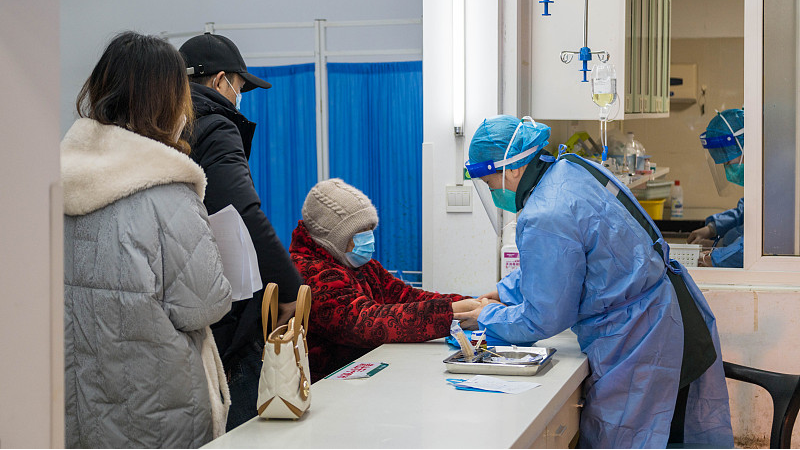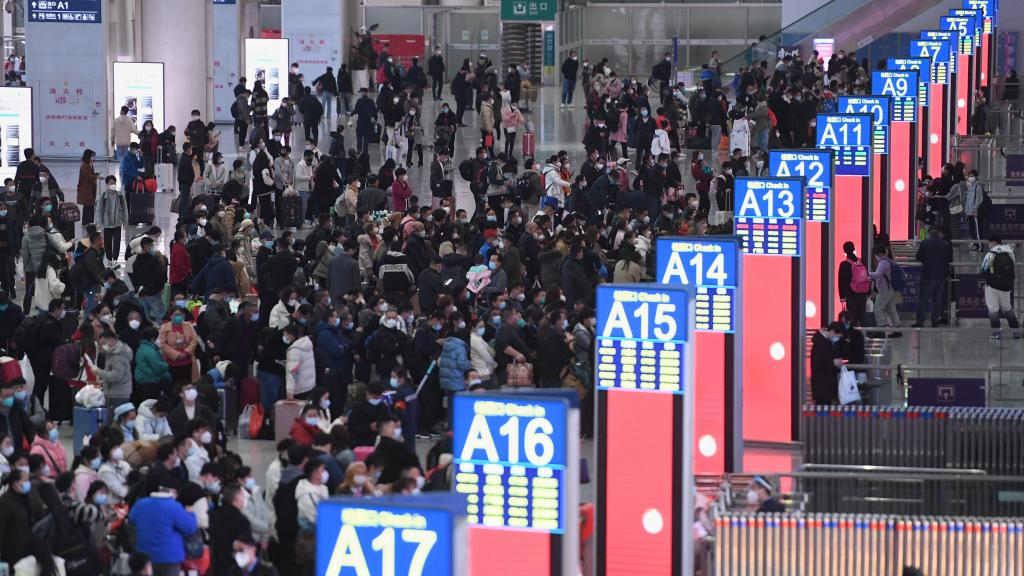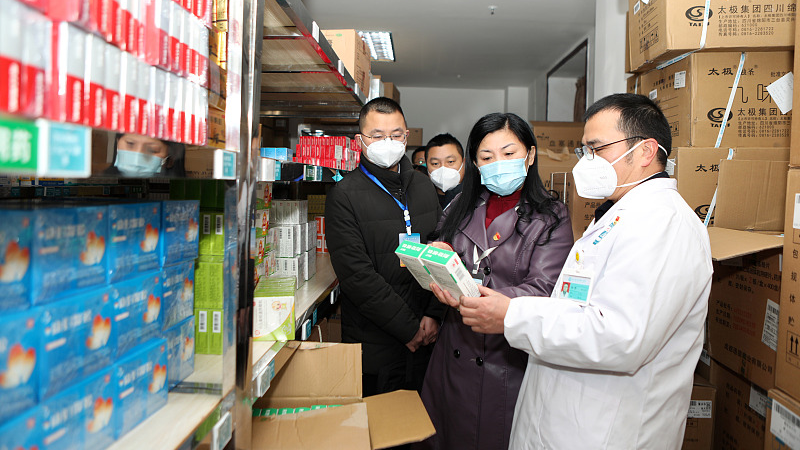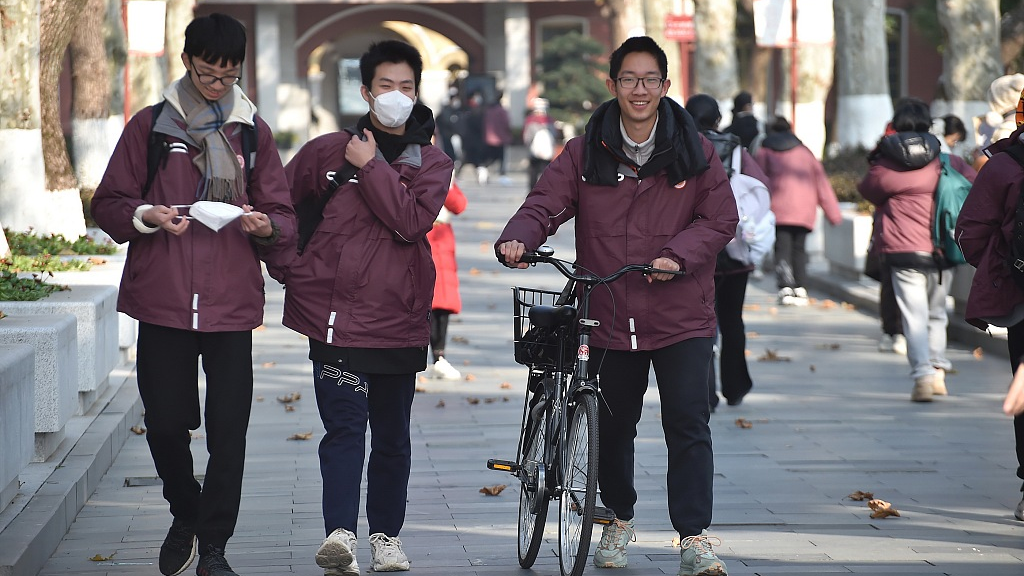
A senior patient receives a jab at a county hospital in Yichang, central China's Hubei Province, December 31, 2022. /CFP
A senior patient receives a jab at a county hospital in Yichang, central China's Hubei Province, December 31, 2022. /CFP
China has taken various measures to ensure the supply of medicines, smooth logistics and the safety of vulnerable groups after the country released "a circular on further optimizing the COVID-19 response" last December, which marked the easing of the dynamic zero-COVID policy but led to a rise in infections in the country.
The policy shift, according to health officials, is proactive rather than reactive, as the Chinese government has constantly optimized its COVID-19 response measures based on the evolution of the pandemic and deepening research on the virus.
One example is the increase in COVID-19 vaccinations from last year to prepare for the first post zero-COVID wave.
As of November 28, 2022, the number of people over the age of 60 who were partially vaccinated or fully vaccinated reached 90.68 percent and 86.42 percent, respectively, according to the National Health Commission (NHC). The number of people over the age of 60 who had received booster shots reached 181.511 million.
Since the COVID-19 policy was relaxed in December and as China further eases measures by downgrading the management of COVID-19 from Class A to Class B from January 8, the country is going all out to ensure a smooth shift.

Passengers are seen at Shenzhen North railway station in Shenzhen, south China's Guangdong Province, January 7, 2023. /Xinhua
Passengers are seen at Shenzhen North railway station in Shenzhen, south China's Guangdong Province, January 7, 2023. /Xinhua
Ministries including transportation, agriculture and rural affairs, civil affairs and education have all made preparations to cope with mass infections in order to limit shortages of medical supplies and workers, avoid disruption to freight logistics and protect vulnerable groups.
China's railway operators have adopted flexible operating plans to increase transportation efficiency and ratchet up capacity in key areas and at peak hours to better cater to people's travel needs during the Spring Festival, which is expected to see nearly 2.1 billion trips around the country.
Wan Xiangdong, the chief pilot of the Civil Aviation Administration of China, said the administration will increase the average daily number of flights to 11,000 during the holiday, equivalent to 73 percent of the pre-pandemic level in 2019. He added that domestic aviation companies are encouraged to add more flights on popular routes to meet the demand of passengers during the travel rush.
To ensure the unimpeded transportation of medical supplies, the country's State Post Bureau has urged companies to hire more delivery workers or temporary workers. Distribution centers have also been encouraged to maximize their operation capacities by optimizing delivery routes, extending service hours and carrying out night deliveries to ensure the stable operation of postal and delivery services during the Spring Festival.

Inspectors check the storage of drugs at a clinic in Handong Village, Zhutuo Town Health Center, southwest China's Chongqing Municipality, January 4, 2023. /CFP
Inspectors check the storage of drugs at a clinic in Handong Village, Zhutuo Town Health Center, southwest China's Chongqing Municipality, January 4, 2023. /CFP
The Ministry of Agriculture and Rural Affairs has rolled out prevention and control measures in China's rural areas, including fortifying the coordination of urban and rural medical resources, equipping rural areas with key medical and health supplies such as oxygenators and ambulances, and establishing a mechanism of matching assistance between primary hospitals and superior hospitals so that smooth referrals can be guaranteed and people with severe diseases can get proper treatment.
To ease medicine shortages in rural areas, the Joint Prevention and Control Mechanism of the State Council has set up a special supporting team and established a daily dispatch system to coordinate the distribution of medicines and other key medical supplies nationwide.
Meanwhile, the NHC has implemented a daily monitoring, reporting and dispatch system for rural health organizations. Once shortages of medical supplies, especially medicines, are found, they will take prompt measures to help local governments to solve the problem.
To ensure efficient and orderly operation and treatment of severely infected people in rural areas, local governments asked hospitals to strengthen daily contacts with key personnel and monitor their health so that if they're found to be in a critical condition, measures can be taken in the early stages. And the governments have also asked second- and third-tier public hospitals to allocate special personnel to take responsibility for referrals from first-tier hospitals, simplify the referral process and optimize the referral channels.

Students walk out of school after an examination at a high school in Hangzhou City, east China's Zhejiang Province, January 6, 2023. /CFP
Students walk out of school after an examination at a high school in Hangzhou City, east China's Zhejiang Province, January 6, 2023. /CFP
The country's National Healthcare Security Administration on Saturday released a circular to further optimize medical insurance policies to ease the financial burden on COVID-19 patients.
The document stipulates that all COVID-19 patients will receive subsidies from state finance for hospitalization expenses not covered by basic medical insurance, serious disease insurance or the medical assistance fund, if they are admitted before April 1, 2023.
Patients covered by medical insurance can have at least 70 percent of their fees generated from outpatient and emergency COVID-19 infection treatment at designated medical institutions reimbursed as of March 31, according to the circular.
In accordance with the optimization of COVID-19 policy, the Ministry of Civil Affairs issued a circular with other authorities including the NHC recently to stress the aim of epidemic prevention and control in urban and rural communities is to protect the safety and health of local residents and minimize the impact of the epidemic on locals' work and life.
According to the circular, epidemic prevention and control work should include the provision of health services by classification, timely responses to residents' needs for health services, and care for community workers and medical staff in urban and rural areas.
The Ministry of Education also announced measures to ensure the health and safety of teachers and students, and the normal order of the school system.
For example, primary and secondary schools should strengthen the construction of clinics, strengthen professional training for practitioners, equip themselves with necessary medicines and provide temporary observation for teachers and students with fevers or other symptoms.
In addition, schools and kindergartens will no longer carry out all-inclusive nucleic acid testing, and neither faculties nor students will need to present negative nucleic acid test results to enter or leave campus.